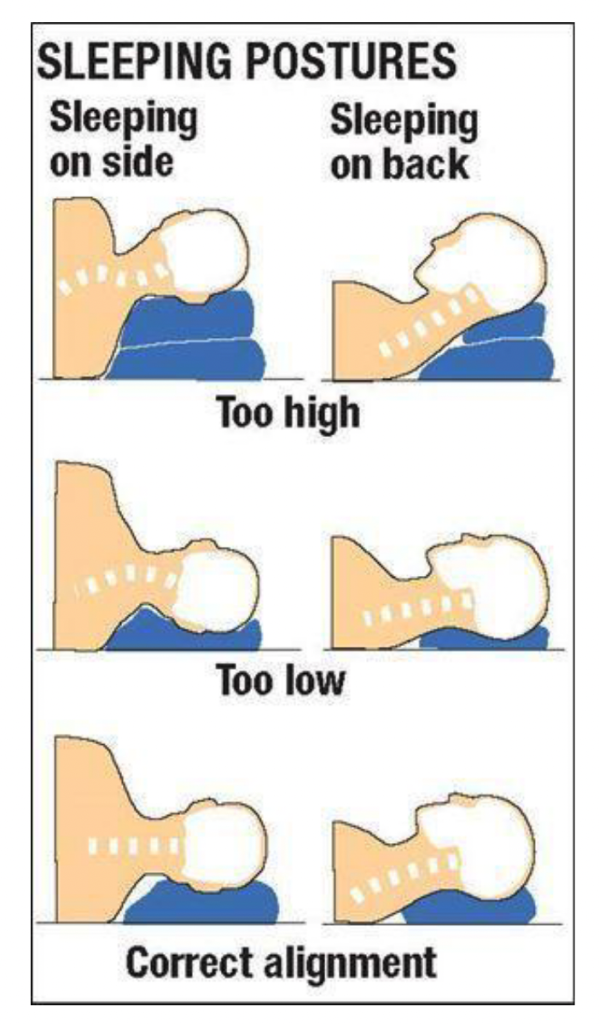Is Your Sleep The Issue?
Sleep is important on a multitude of levels from energy, concentration, communication, tissue healing, and metabolic rate but did you know it could be the cause of your neck pain? There are thousands of pillow selections out there that claim to help different things, whether it is posture, memory foam imprint, cooling, you name it but the bottom line is that the head should be in a neutral position. Ideally, you want your head position fixed equidistant between the shoulders when lying on your side and equidistant over the torso if lying on your back.
Placing the head in too much forward flexion, backward extension, or side flexion can cause compression to the neuroforaminal spaces, which can entrap the nerve roots and cause irritation to them. This can lead to numbness and tingling in the upper extremities, as well as neck pain and headaches. In summary, your neck pain could be relieved with a simple fix, such as a positional change. Come let one of our doctors of physical therapy help you solve the problem and get you back to sleeping well without pain being a limiting factor.
To your Health,
Johnny Gray, DPT
What is Blood Flow Restriction Training?
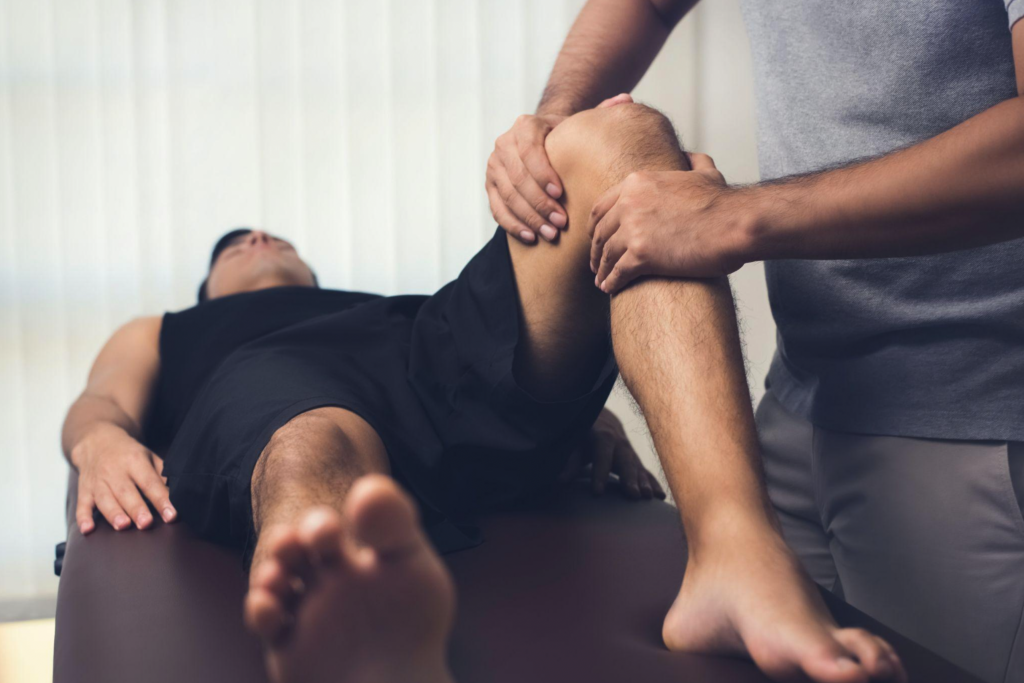
Have you come across the term “blood flow restriction” and wondered if this form of treatment would be helpful for you? Blood flow restriction has become a recently popular method of training in clinical settings, and is used to help individuals increase their muscle mass without having to lift heavy weights.
To perform blood flow restriction, an elastic band is wrapped around the most proximal (closest to you) portion of the limb. After the cuff is applied, your physical therapist will instruct you in performing an exercise with it on. You may find that your leg or arm fatigues more quickly with the blood flow restriction cuff applied to it – this is to be expected! Blood flow restriction causes quicker and more intense muscle fatigue, which helps the nervous system recruit large, fast-twitch muscle fibers. These have the greatest capacity to grow, resulting in greater strength gains without the heavy weights!
Blood flow restriction is great for individuals who have recently undergone surgery and are not able to lift weights or exercise to their normal capacity. Ask your physical therapist if blood flow restriction is a good option for you!
To your health,
Dr. Mattie Millikan PT, DPT
Best Time of Day to Perform Stretching Routine
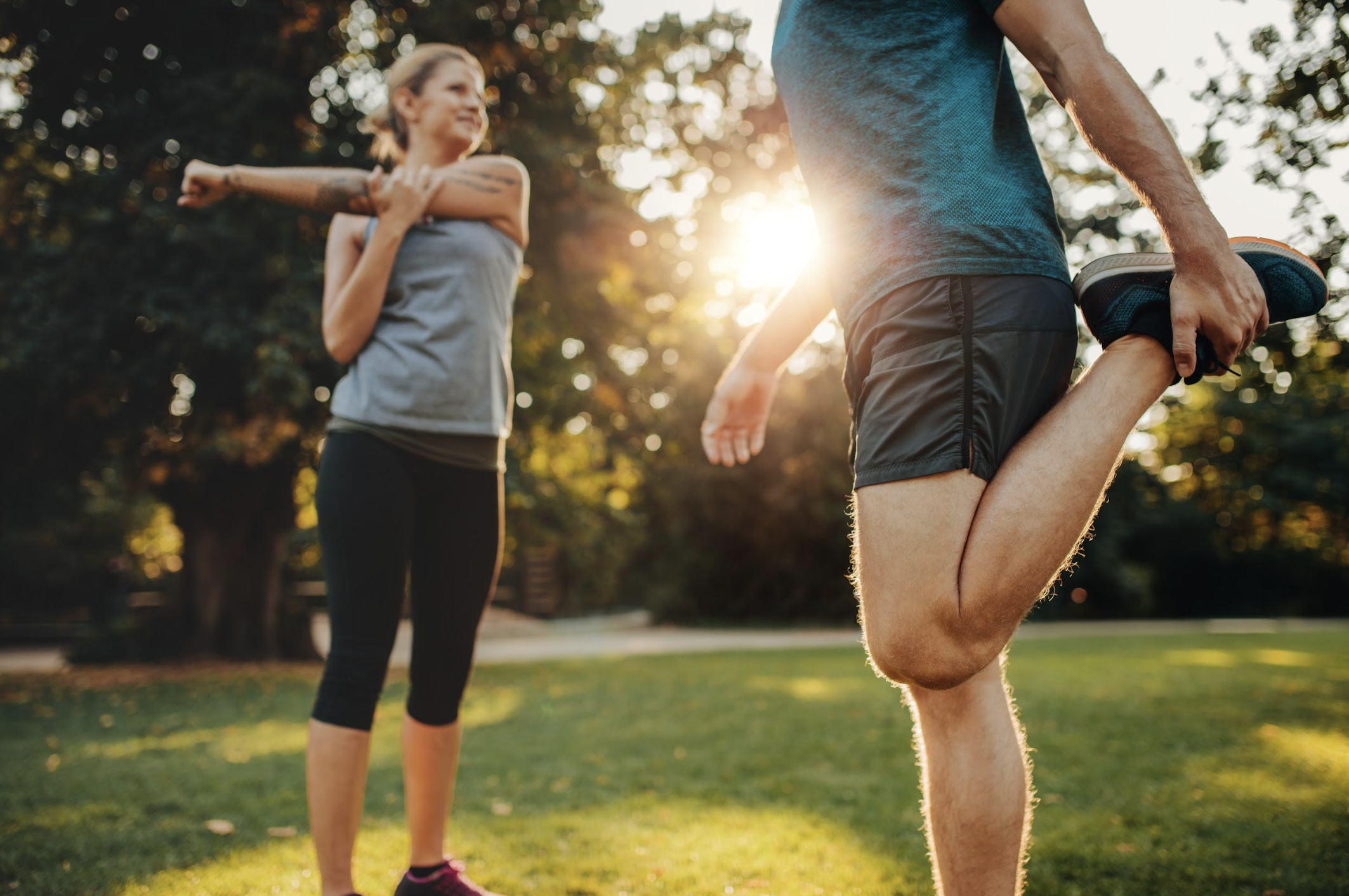
Have you recently been given a stretching routine and do not know how to get started? Perhaps you are feeling “tight” and want to start doing some stretches at home. We all know that stretching is good for our overall health and to relieve tension throughout our muscles, however how do we find time throughout the day to perform our stretching routine? What is the best time of day? Morning or afternoon? Before or after activity?
The answer is: it depends. First question is what is your goal? If you are an athlete, post practice stretching facilitates ROM improvements because of increased muscle temperature. Stretching should be performed within 5-10 minutes after practice. Increased body temperature increases the elastic properties of collagen within muscles and tendons, which allows for greater stretch magnitude.
If the goal is to improve overall flexibility, additional stretching throughout the day will be required. Finding 10-15 minutes throughout different times of the day to perform a proper, stretching routine is necessary for tissue adaptation and elongation. A very important aspect of stretching is to have a light, general warm up to allow for the increase in muscle temperature necessary for effective stretching.
With every program, it will need to be specific to the individual’s needs. If you are in search of a good stretching regimen and you have questions, feel free to contact any one of our three locations to set up an examination by one of our Doctors of Physical Therapy and we will perform a thorough evaluation and give you the best program to fit your individual needs and deficits. Do not delay and call for an appointment today!
To Your Continued Health,
Brannon Chester, DPT Doctor of Physical Therapy
Youth Injuries
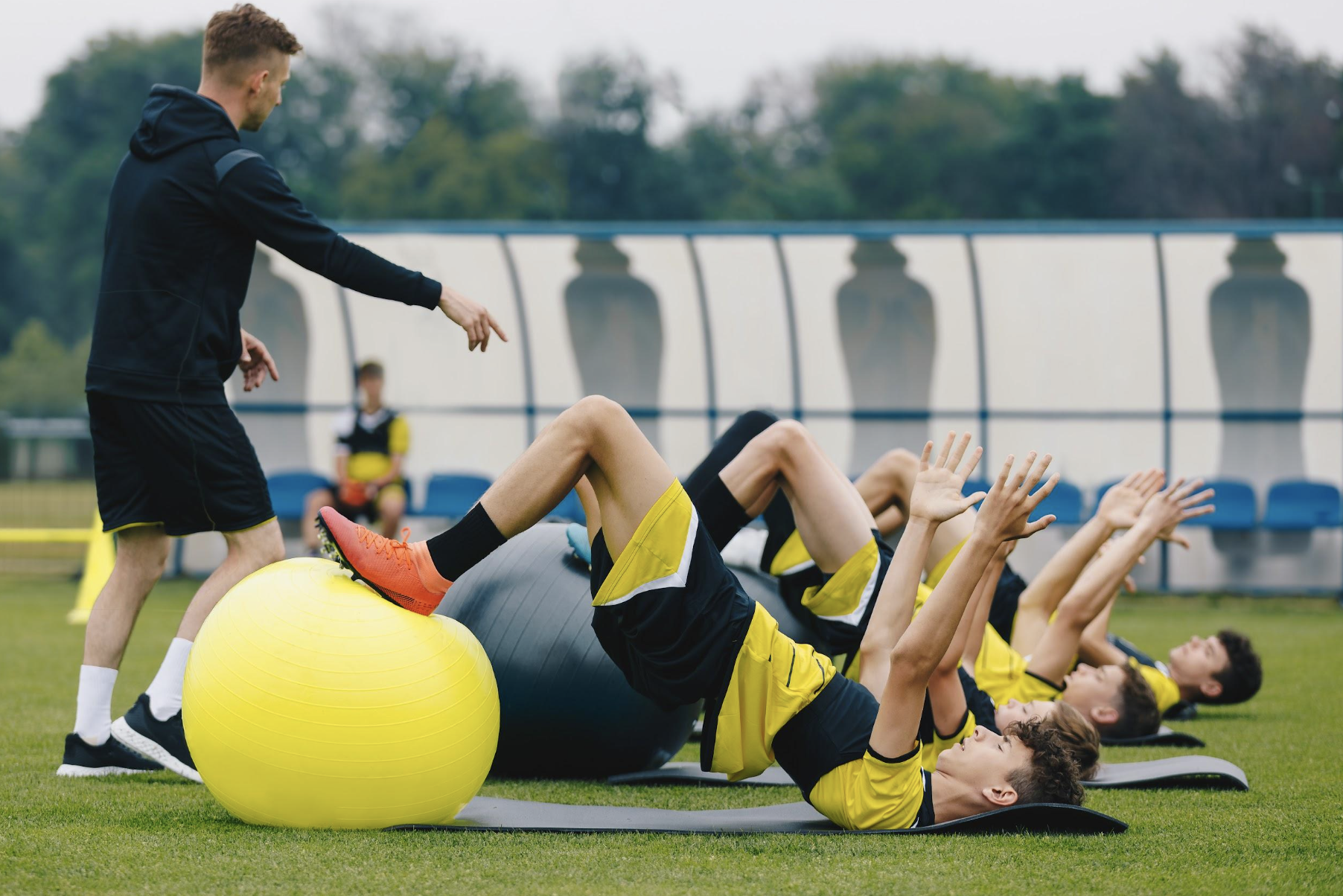
Today we see more musculoskeletal injuries in our youth athletes than we desire but what is the cause(s). Now with athletic competition comes an inherent risk for injury just as driving a vehicle places you at a greater risk for being involved in a MVA, but these are adult injuries that we see occurring in our adolescent population. Some factors that are likely contributing factors are overuse, inadequate training, and improper movement patterns or mechanics. Some of the more common examples we see are in our young throwers with shoulder/elbow injuries who participate in baseball/softball basically year round with fall ball and spring/summer travel ball. There is a plethora of research that suggests this type of repetitive activity places these athletes at a greater risk for overuse type injuries such as UCL or “Tommy John” at the elbow or labral and rotator cuff injuries at the shoulder. These activities are demanding for adequately trained adult athletes that compete at the highest level therefore even more demanding on the skeletally immature adolescent population. Another injury that we see occurring in adolescents are growth plate injuries. These can be dangerous as it is usually traumatic from high impact events and oftentimes require surgical intervention to stabilize the fracture. Additionally with these types of injuries we can see long term effects with interrupted growth creating even bigger issues down the road for these youngsters.
As health care providers it is our job to not only educate our patients and their parents of these inherent risks but to also inform them of strategies that support healthy development yet safe participation in sport. One strategy that seems to be collaborative thought in the healthcare world is participating in a variety of sports. This ensures that overuse type activities such as overhead throwing do not occur, lowering the risk of injuries occurring as a result of overuse.
From a development standpoint this allows kids to develop many different movement patterns and skill sets due to the physical demands and strategies unique to each individual sport. If your child is suffering from injuries related to sport, let our staff at First Choice get them back on the right track to allow for a safe return to competition.
To Your Health,
Dr. Johnny Gray PT, DPT
Creating the Perfect Warm-Up Routine
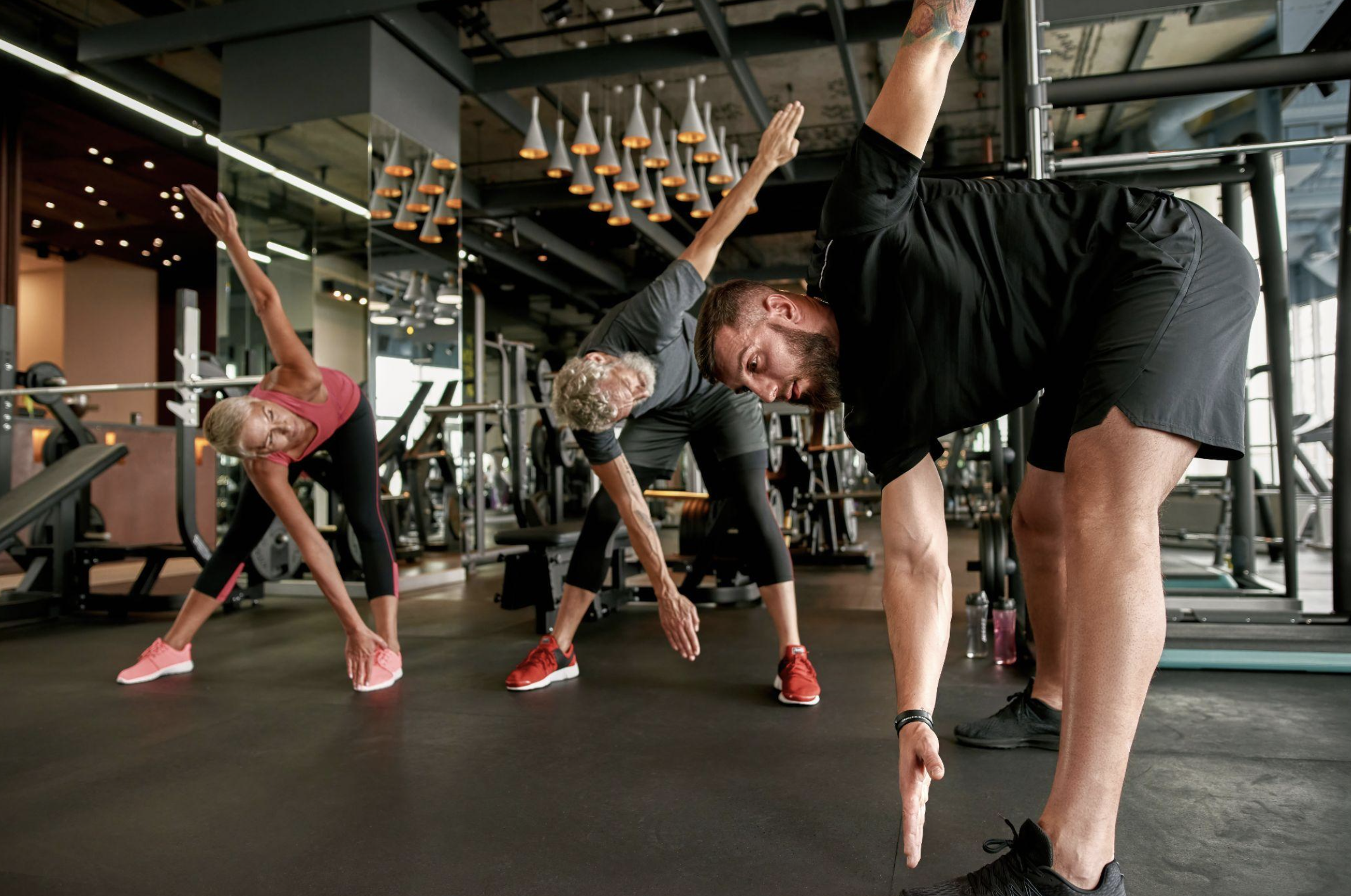
Whether you are an avid gym-goer, new to fitness, or getting back into exercising after surgery, a solid warm-up routine is essential for success. Evidence shows that warming up prior to exercise prevents injury and prepares your cardiovascular system. Most tissue injuries, specifically muscle strains and tears, occur when a muscle is placed under tension it cannot handle or isn’t prepared for. So how do we prepare our muscles for a workout? In order to keep it simple, there are two things to keep in mind when creating a warm-up routine.
- Increasing your Body Temperature
- Elevating the core temperature of the body prior to exercise is beneficial for several reasons. When our muscles are warm, it increases their elasticity and flexibility, which loosens the tissues around the joint, improves ROM, and prevents tissue damage. The best way to increase the temperature is to get your heart rate up gradually with light activity (jogging in place, arm swings, etc.).
- Targeting Specific Areas
- This simply means, if you are planning to work your shoulders, warm up your shoulders. If you are going for a run, warm up your legs. This allows blood flow to increase to the areas you are about to work, which leads to a more efficient workout.
If you are unsure of what exercises to incorporate in your warm-up, ask your physical therapist and they will be happy to assist you in creating a routine that works for you. And remember, it doesn’t have to be long, just 5 to 10 minutes to prepare your body and mind for the workout ahead.
To your Health,
Dr. Ali Henderson PT, DPT
Shoulder Impingement Syndrome
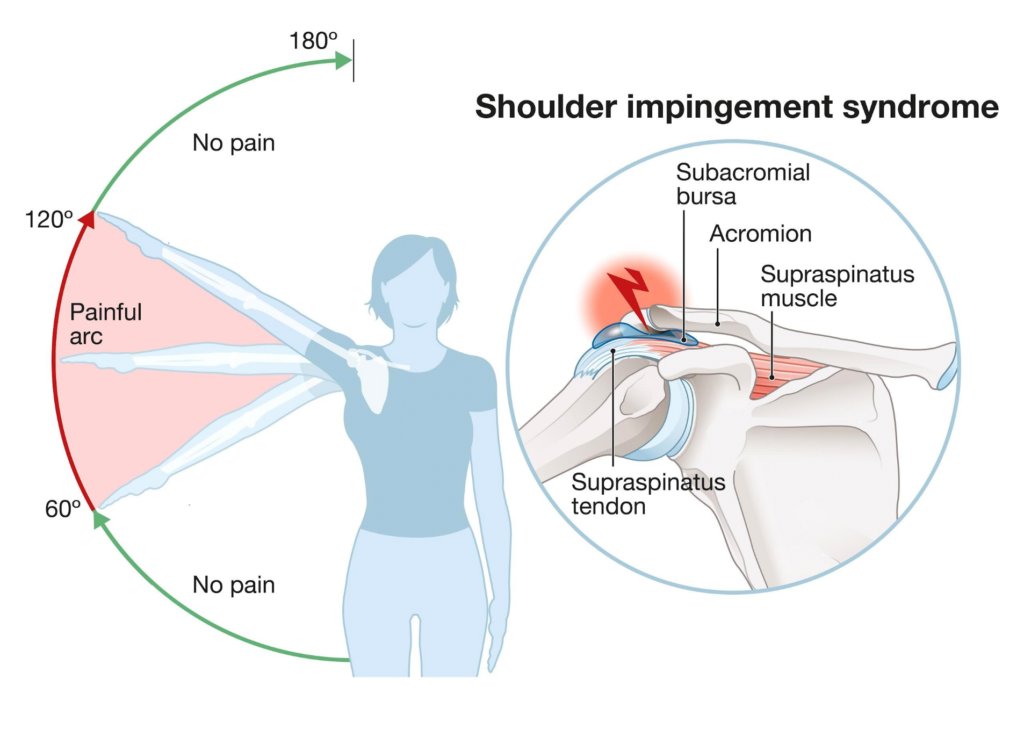
Typically with shoulder impingement, your biggest aggravating movements are going to be reaching overhead, behind your back and behind your head/ear. This is because these positions compress and close down the space in your shoulder joint the most. In order to improve this, you need to stretch the surrounding muscles around your shoulders/neck and strengthen yourRotator Cuff/shoulder blade muscles. Here are a few examples of stretches that could provide some help. If you have had shoulder pain that has been chronic for over 2 weeks you may need to see one of our Doctors of Physical Therapy for further help. Call 850-248-1600 today and schedule your shoulder evaluation.
Click Here for Our Home Exercise Program for Shoulders
To your Health,
Dr. Brooke Marshall, PT, DPT
Do I Need Surgery For a Rotator Cuff Tear?
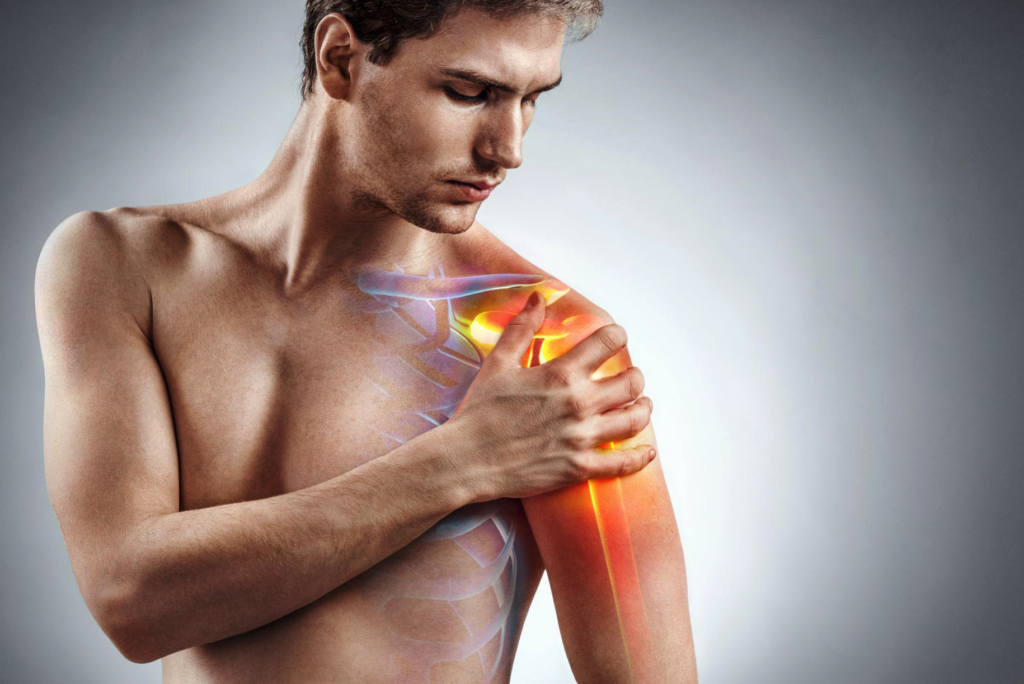
Do I need surgery for a Rotator Cuff Tear? Not always. Depending on the type/size of the tear and the person’s activity level, rotator cuff tears may be rehabilitated with conservative care. The Journal of Shoulder and Elbow Surgery reported one study published in 2013 of 600 people of all ages and found that 22% had complete tears of their rotator cuffs. Of these, 65% had no symptoms, so they did not even realize they had a rotator cuff tear. The facts are that most rotator cuff tears won’t need surgery.Your Doctor of Physical Therapy can guide you through a treatment program specifically designed for your case to help decrease pain, improve range of motion, and return you to your back to full function. Give us a call Today, and let us help you avoid surgery!
To your health,
Dr. Luize Rossanez PT, DPT
Why Do My Knees Hurt While Running?

Why do my knees hurt while running? Do you love to run? But your knees keep hurting you? Did you know that at least 50 percent of regular runners get hurt each year—some estimates put the percentage even higher—sometimes from trauma, such as a fall, but more often from overuse (Yale medicine). If you have knee pain while running, you should probably discontinue that activity until you find out what’s wrong. You could be suffering from an underlying pathology/injury causing the pain. You may be able to continue running with some slight modifications to your stretching program, your footwear, or correcting poor knee, ankle, or hip running mechanics. Call today and schedule your appointment and let our Doctors of Physical Therapy help you get back to running again!
To your health,
Dr. Brooke Marshall PT, DPT
Is Swimming Good For My Arthritis?
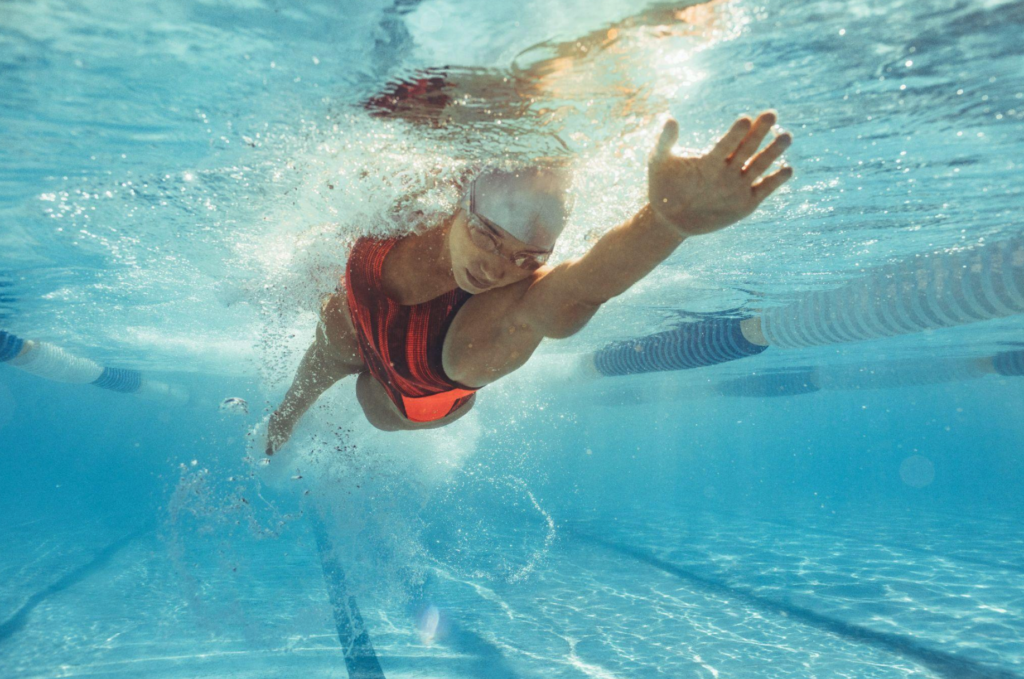
We get asked that question often in the clinic. As summertime and warm weather approach, let’s take a moment to answer! The short answer is YES! Swimming and water aerobics are great activities for those with arthritic joints, especially the knees, hips, and back.Buoyancy or the force water exerts upward on the body, decreases the effect of gravity on a person. This change in pressure offloads the joints, providing less stress where it hurts.Water-based exercise gives you not only a cardiovascular benefit, it also provides resistance to all your movements in any direction via tensile forces of the water itself. Therefore, as summer comes upon us, take some time to get in the pool and make a splash! Your joints will thank you!
Call us today! (850) 248-1600
Best Position for Back Pain
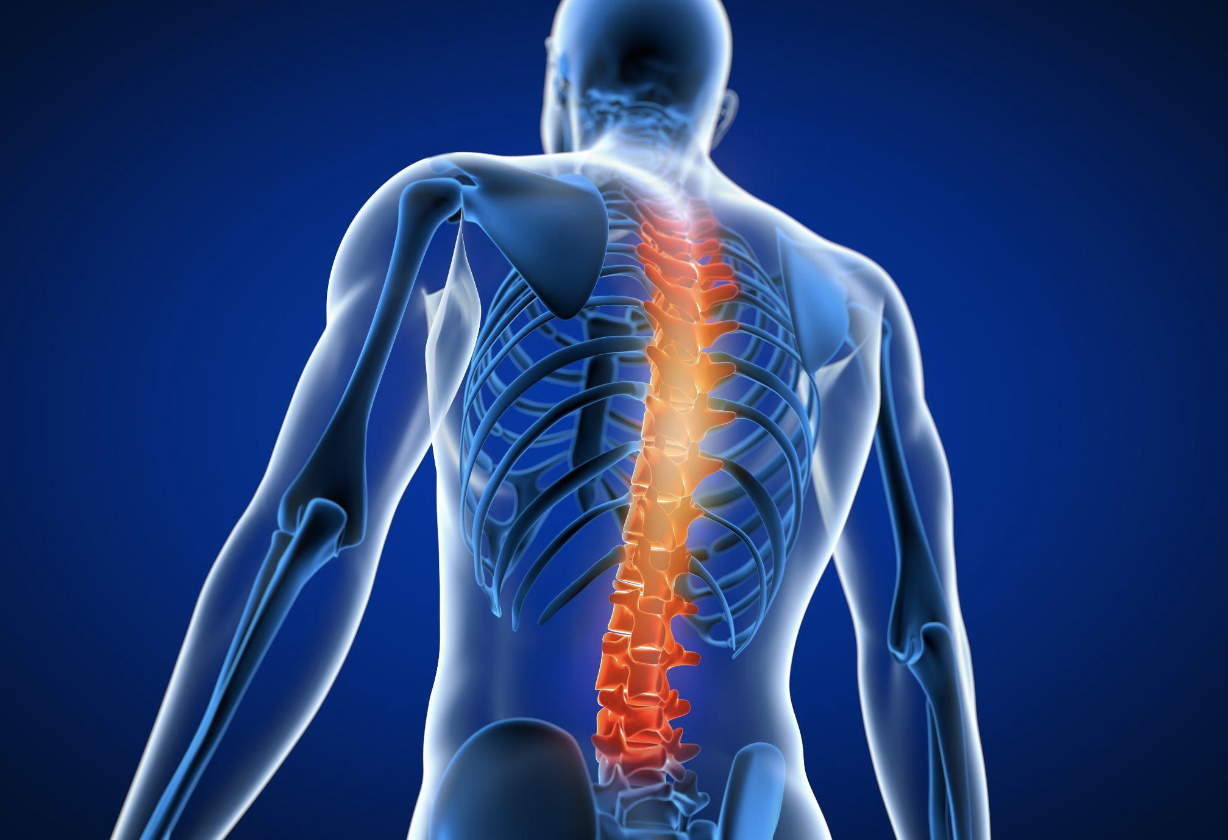
Depending on what is causing your back pain, there are specific ways you can position yourself to decrease your pain levels! For instance, if you feel better in a slightly forward position (ie, leaning forward when standing upright or leaning forward on a buggy in a grocery store), you might feel better using a pillow wedge during sleep to put underneath your feet. Or, if you have more pain when sitting for prolonged periods, you may find relief by placing a “lumbar roll” behind your back. You can purchase this or, better yet, roll up a medium-sized towel and put it into the natural curve of your low back against a seat chair. With 80% of Americans suffering from low back pain, it is no wonder that our Doctors of Physical Therapy are breaking their “backs” trying to help everyone with theirs! Lucky for you, we are the back specialist, and we are ready to help! Give us a call at 248-1600, and we will get you “back” in the game.
Thanks for reading!
What To Expect When You’re Expecting…To See A Doctor Of Physical Therapy.
You should never have to wait weeks or months to see a Physical Therapist. From same-day appointments to email and phone access, First Choice Physical Therapy is here for you. With Florida’s direct access you don’t even need a physician’s referral in most cases. Our talented and trusted Doctors of Physical Therapy are here for you today, tomorrow or whenever you may need us. Here is a list of a few things to “expect when you are expecting” to visit our Doctors.
- Expect fast and courteous care- If you have an 8 o’clock appointment and you have all of your paperwork done then you can expect to be seen right away. No packed waiting rooms and uncomfortable chairs. Our Doctors are unlike most you are accustomed to-meaning they hold a very tight schedule and see patients at their scheduled times. Why? Because we value your time and appreciate your business.
- Expect to pay the same amount of money per visit. Most outpatient Physical Therapy clinics have the same contracted rates with the insurance companies. So your co-pay or co-insurance will be the same from clinic to clinic. However, don’t expect the care to be the same. First Choice Physical Therapy is second to none when it comes to customer care. We love our patients and show them every day with our kind, courteous care and luxury amenities that no other clinic in Bay County has. Don’t believe us? Then research for yourselves. Be a good consumer. Do a walk-through of a clinic that you are thinking of using and compare companies. You will be paying the same price, but will you be getting the same care?
- Expect nothing but the highest trained and skilled Doctors of Physical Therapy in the business. Knowledge is power and knowing that your therapist has completed all of the necessary schoolings to become competent in the practice of Physical Therapy is just not enough. Are they good at what they do and are they passionate about helping you to achieve your physical therapy goals? Go to our website www.1stchoicept.com and research our Doctors. We are sure you will find that our skills and education come second only to our passion to serve you.
- Expect outcomes. Through teamwork and hard work, Physical Therapy can accomplish a lot in the way of reducing your pain and getting your mobility back. Often times Physical Therapy can help you to avoid costly and painful surgeries. So tell your Physician you want to try Physical Therapy first and then come to First Choice Physical Therapy. Make your choice clear to the Physician when asking to come to our clinics. Remember, you don’t need a referral to see our Doctors so just call our offices to get your appointment fast. We can usually find you an appointment within 24 hours. We hire the most Doctors of Physical Therapy in Bay County so we should be able to see you fast.
- Expect to answer some detailed questions and perform some activities for testing purposes. Below is the top 10 things to help prepare you for your visit to First Choice Physical Therapy:
- Make a list of any questions that you might have so that you can make the best use of your time with your physical therapist.
- Write down any symptoms you’ve been having and for how long. If you have more than one symptom, begin with the one that is the most bothersome to you.
- Make specific notes about your symptoms. For example, is your pain or other symptom better or worse with certain activities or movements or with certain positions, such as sitting or standing? More noticeable at certain times of the day? Relieved or made worse by resting?
- Write down key information about your medical history, even if it seems unrelated to the condition for which you are seeing the physical therapist.
- Make a list of all prescription and over-the-counter medications, vitamins, and supplements that you are taking.
- Write down and describe any injuries, incidents, or environmental factors that you believe might have contributed to your condition.
- Make a list of any medical conditions of your parents or siblings.
- Make sure you can see and hear as well as possible. So wear your glasses and hearing aids.
- If available, bring any lab or diagnostic reports from other health care professionals who have treated you for your current condition.
- You may want to avoid tight or formal clothes, in case the therapist wants you to engage in activities during the first session.
As always, we appreciate your business and want to continue to be your Home Town Physical Therapists. This year we will be celebrating our 20th year in business and are so blessed and grateful that we have great patients who have made this possible.
To your continued health,
Dr. Wade Rinehart, PT, DPT
Doctor of Physical Therapy
Let’s Talk Our Walk: Ankle Sprains

Have you ever “rolled” your ankle? This is called an ankle sprain. Approximately 26,000 people sprain their ankle a day in the United States. A day!
Despite the prevalence of ankle sprains, many people do not seek medical attention for their injury and the repercussions of not doing so can have long lasting effects on daily function and pain. Research shows that nearly 50% of individuals with ankle sprains not properly rehabilitated report pain three years later. Don’t live with your pain!
Come see us at First Choice Physical Therapy. Our dedicated team will help you return to your life pain free!

